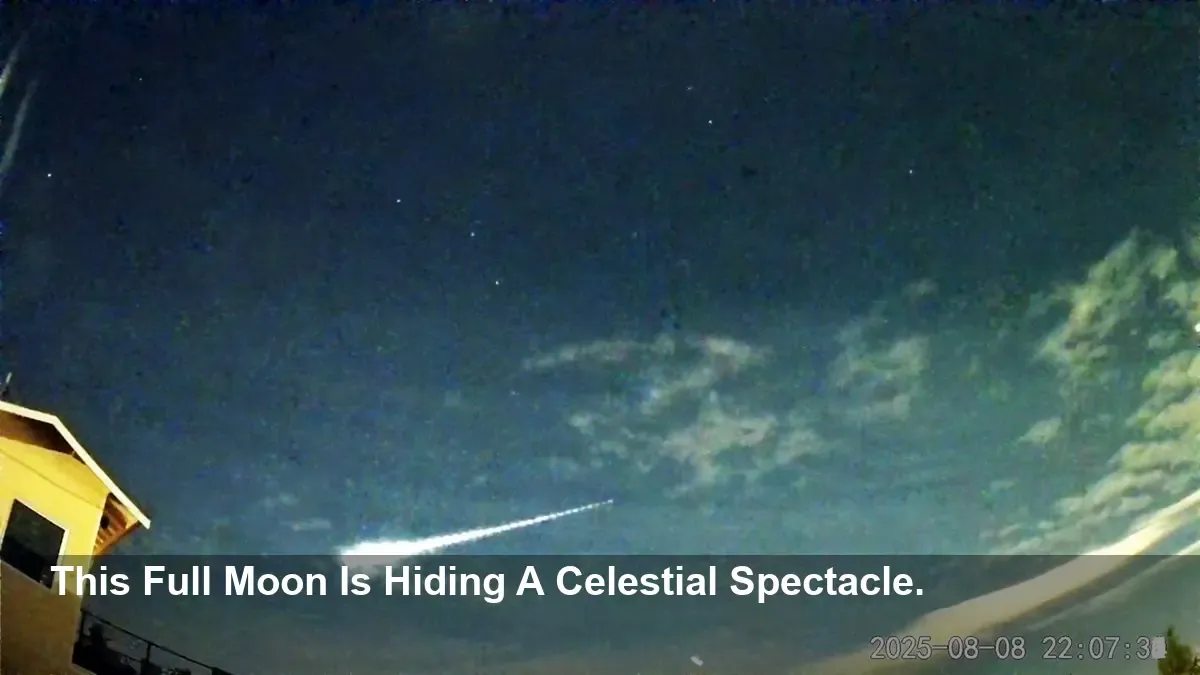Full Moon to Spoil Nov. 2025 Meteor Showers

- Major Obstruction: A brilliant full moon on Wednesday, November 5, 2025, will severely limit visibility for peak meteor shower activity.
- Active but Obscured Showers: The Northern and Southern Taurids, along with the Leonids, are active this month, but the moonlight will wash out all but the brightest fireballs.
- Limited Viewing Window: The best, albeit brief, opportunity for stargazers to catch any activity will be in the pre-dawn hours on the weekend of November 1-2, after the waxing gibbous moon has set.
- Drastically Reduced Rates: Experts predict that even in ideal dark-sky locations, hourly meteor rates will be significantly lower than usual due to the lunar glare.
November's Bright Moon Dims Meteor Hopes
Stargazers looking forward to November's celestial fireworks are in for a disappointment. While the month is typically a strong period for meteor activity in the northern hemisphere, the 2025 spectacle will be ruined by an unfortunately timed full moon.
On the night of Wednesday, November 5th, a brilliant full moon will dominate the sky. Positioned opposite the sun, it will remain above the horizon all night long, casting a bright glare that will effectively bleach the sky and obscure most of the meteor activity that would otherwise be visible.
The Celestial Show You Might Miss
November is known for its reliable meteor showers, primarily the twin Taurid showers (Northern and Southern) and the famous Leonids. Combined with strong sporadic meteor rates, this month usually offers a fantastic show for observers. However, the overpowering moonlight in 2025 means that only the most exceptionally bright meteors, or fireballs, will have a chance of being seen.
While the southern hemisphere typically sees less activity during this period, their already lower rates will be further diminished by the lunar interference, making for an unusually quiet month.
A Glimmer of Opportunity
For the most dedicated sky-watchers, not all hope is lost, but the window of opportunity is incredibly small. Your only real chance to view the showers under dark skies will be during the weekend of November 1-2. During this time, the waxing gibbous moon will set before the first light of dawn, providing a brief period of darkness for meteor hunting.
What to Realistically Expect
Even with this small window, expectations should be kept in check. According to the American Meteor Society, morning observers in mid-northern latitudes might see rates of around 12 meteors per hour under perfect, dark-sky conditions. Observers in tropical southern locations can expect about 6 per hour. Evening rates will be significantly lower, near 3 and 2 per hour, respectively.
It's crucial to remember these are best-case scenarios. Actual rates depend on local weather, light pollution, and an observer's alertness. Those in or near urban areas will see far less, as city lights will compound the moon's impact, hiding all but the most spectacular fireballs from view.




